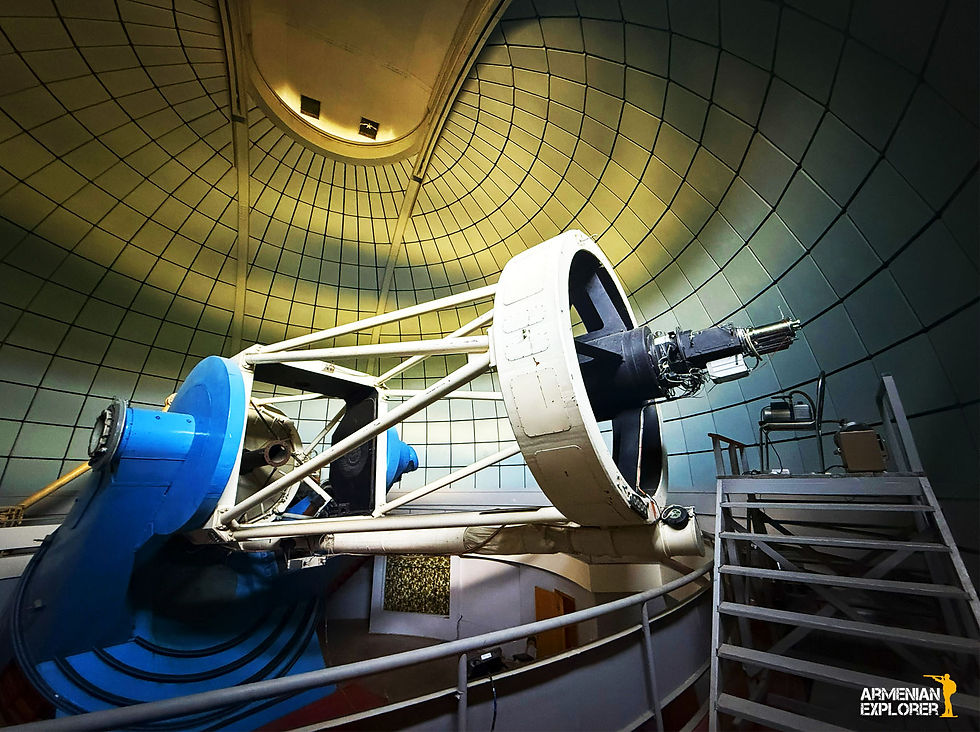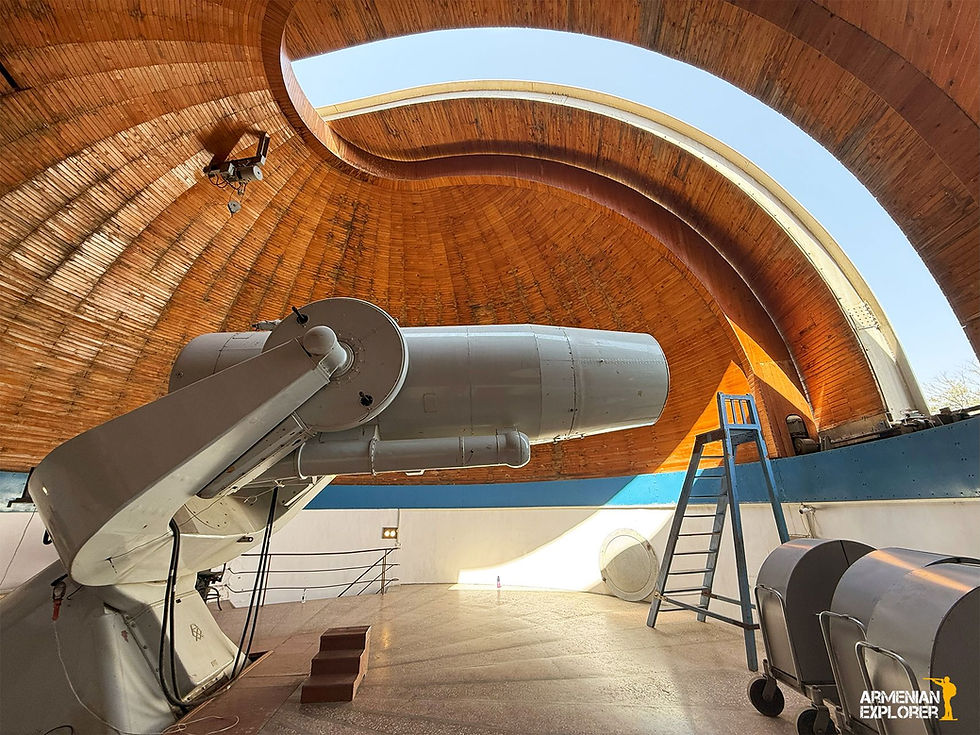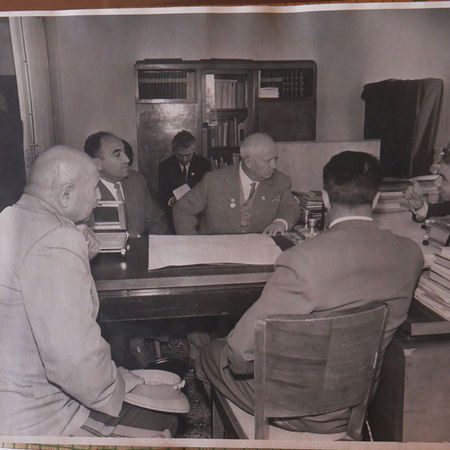

В гостях у звезд: Бюраканская обсерватория
Среди суровой красоты Арагацотнского региона, где заснеженные вершины, кажется, пронзают небеса, скрывается настоящая жемчужина астрономических исследований — Бюраканская астрофизическая обсерватория. Эта статья предлагает краткий обзор её удивительных особенностей и станет полезным путеводителем для тех, кто планирует визит или хочет узнать больше о её достижениях.
Расположенный на высоте 1500 метров, всего в 50 км к северу от Еревана, село Бюракан может похвастаться кристально чистым небом и минимальным световым загрязнением, что обеспечивает непревзойденную точку обзора для изучения космоса. Эта уникальная обстановка сыграла решающую роль в создании здесь обсерватории!
Основанная в 1946 году Виктором Амбарцумяном, Бюраканская астрофизическая обсерватория, или просто Бюраканская обсерватория, расположена в деревне Бюракан.

Весна в Бюраканской астрофизической обсерватории! Телескоп ZTA-2.6 является крупнейшим наблюдательным инструментом Бюраканской астрофизической обсерватории. Здание было спроектировано Саркисом Гурзадяном в 1975 году.
Виктор Амбарцумян — армянский и советский астрофизик, астроном, один из основоположников теоретической астрофизики. Он основал школу теоретической астрофизики в СССР, сделав значительный вклад в развитие науки на мировом уровне.
Архитектурное великолепие зданий было спроектровано Самвелом Сафаряном. Обсерватория включает в себя две основные части: жилую зону и операционную часть, включающую наблюдательные башни, административные и лабораторные здания, актовый зал и гостевой дом. Комплекс зданий обсерватории является архитектурным памятником.

Телескоп ЗТА-2.6 был изготовлен на ЛОМО (Ленинградское оптико-механическое объединение, Санкт-Петербург, Россия) и по сути является близнецом рефлектора имени Г. А. Шайна, установленного в Крымской астрофизической обсерватории.
Ниже приведён список телескопов Бюраканской астрофизической обсерватории.
ZTA-2.6: 2,6-метровый рефлектор Кассегрена, работающий с 1975 года.
103/136/213-сантиметровый телескоп системы Шмидта, используемый с 1960 года.
53/53/180-сантиметровые бинокли Шмидта.
Малые телескопы:
50-сантиметровый рефлектор.
40-сантиметровый рефлектор.
20-сантиметровый рефлектор.
Радиооптический телескоп: PDS-1010A, микроденситометр для измерения плотности.
Первый Бюраканский обзор, начатый в 1965 году с использованием телескопа Шмидта, открыл 1500 галактик с избытком ультрафиолета, известных как галактики Маркаряна. Эти небесные тела обозначаются как «Маркарян» или «Mrk», за которыми следует номер, например, Mrk 501. Дальнейшие исследования в различных обсерваториях показали, что эти объекты, получившие название галактики Маркаряна, составляют обширный класс активных образований в Метагалактике. Значительная их часть обладает радио-, инфракрасным и рентгеновским излучением, а более чем 10 % присущи особенности галактик Сейферта. Среди них имеются также квазары и объекты типа BL Ящерицы.

Однометровый телескоп Шмидта в Бюраканской обсерватории
Второй Бюраканский обзор, проводившийся с 1974 по 1991 год, был сосредоточен на выявлении эмиссионных линий и галактик с избытком ультрафиолета, а также квазаров.
Обсерватория может похвастаться многочисленными открытиями, включая особые звездные скопления (звездные ассоциации с 1947 года), более 1000 вспыхивающих звезд, десятки сверхновых, сотни объектов Хербига–Аро и кометных туманностей, а также сотни галактик.

Внутри дома-музея Виктора Амбарцумяна!
Дом-музей Виктора Амбарцумяна, расположенный на территории Бюраканской обсерватории, представляет собой уникальное место, где можно глубже познакомиться с жизнью и научным наследием великого астрофизика.
Ознакомьтесь с этой статьёй, чтобы узнать о трофейном 1-метровом телескопе Шмидта, который был подарком Гитлера Муссолини и находится в Бюраканской астрофизической обсерватории.
Галерея






















